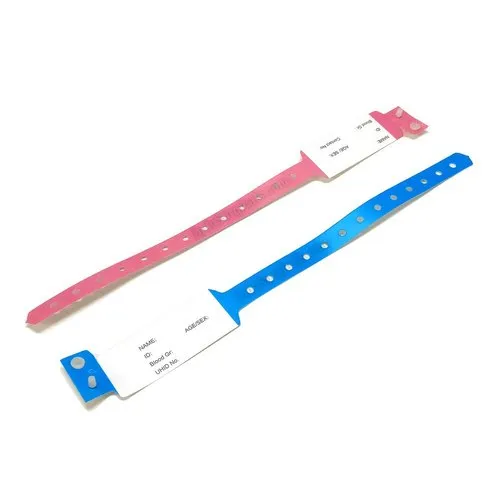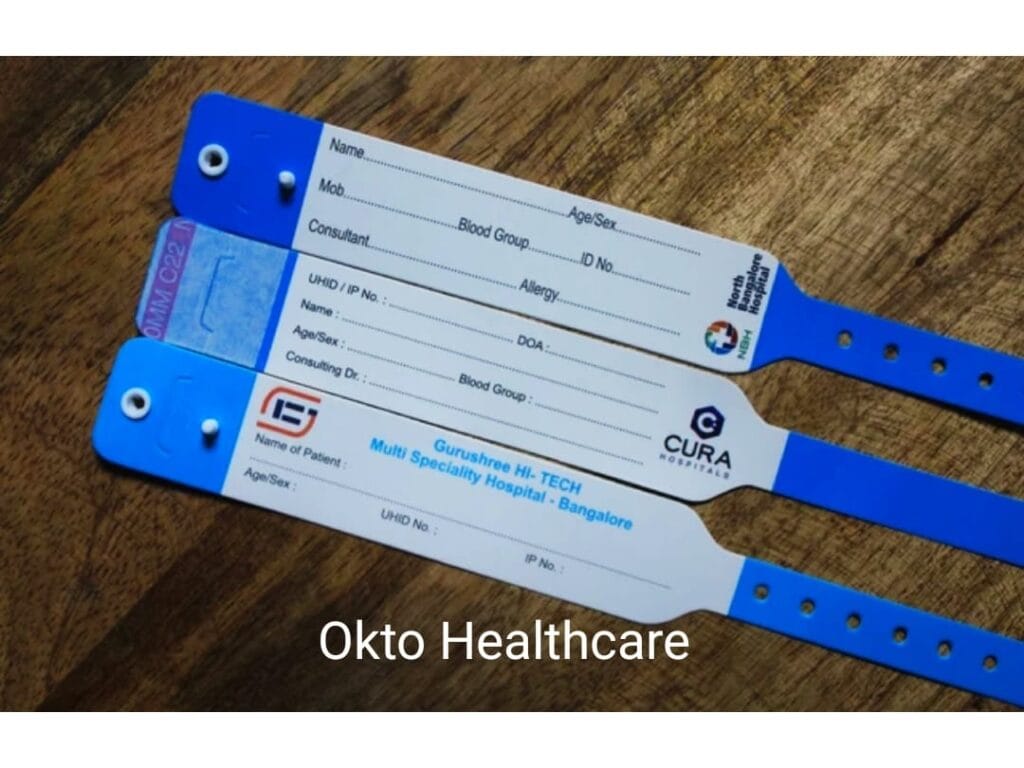Improving Patient Care With Reliable Identification Bands
The execution of efficient recognition bands is a critical component in improving person care within medical care settings. These bands not just offer to reduce the threats connected with individual misidentification however also enhance communication amongst clinical workers, thereby cultivating a safer atmosphere. Numerous sorts of recognition bands cater to details needs, from long lasting wristbands for grownups to specialized bands for babies and essential cases. As the landscape of person recognition develops, one have to consider the effects of these systems on total healthcare distribution and client outcomes. What technologies wait for in this critical location?
Significance of Client Identification
Guaranteeing precise client identification is vital in health care settings, as it directly influences the safety and security and top quality of treatment offered. Misidentification can result in serious mistakes, consisting of providing the wrong drug, performing incorrect treatments, or miscommunicating essential person details. Such mistakes not only jeopardize person safety and security however can also cause lawful ramifications and lowered trust fund in health care systems.
Effective patient recognition is essential to establishing a safe atmosphere where patients obtain personalized and ideal care. It facilitates the precise paperwork of medical backgrounds, allergic reactions, and treatment plans, ensuring that doctor have accessibility to necessary info in all times. Moreover, robust identification protocols aid enhance interaction among clinical staff, improving cooperation and minimizing the danger of mistakes.

Types of Identification Bands
Recognition bands play a vital role in keeping accurate client documents and enhancing security within medical care settings. Various kinds of identification bands are used to provide to the details needs and needs of different client populaces.

Another kind is the ankle band, which is specifically beneficial for infants and babies, guaranteeing that recognition stays undamaged even during care procedures. Specialized bands, such as those for allergic reaction notifies or drop risk indicators, offer added layers of safety by drawing prompt interest to critical person problems.
Lately, electronic recognition bands have gotten popularity, including barcodes or RFID innovation that can be scanned to swiftly retrieve patient data. These bands improve workflows and lessen the danger of human mistake throughout patient identification processes.
Benefits of Effective Identification
Effective recognition of people via the usage of identification bands adds significantly to general person safety and security and care top quality. By ensuring that each patient is accurately identified, doctor can properly match medical therapies and procedures to the correct individual, minimizing the danger of errors. This is specifically important in environments with high patient turn over, where the potential for misidentification is higher.
Furthermore, reliable identification bands enhance interaction among medical care groups. Accurate and clear person recognition fosters partnership and guarantees that all team members understand a patient's details demands and case history. This interaction is important for supplying collaborated treatment, particularly in emergency situation scenarios where time is vital.

Ultimately, effective recognition via making use of identification bands not just safeguards people however additionally promotes a culture of safety and security within health care facilities (Patient Identification Band). By prioritizing exact recognition, healthcare companies can boost end results and improve the try this total patient experience
Implementing Identification Systems
While the importance of patient identification is well acknowledged, the implementation of durable recognition systems positions a facility challenge for healthcare companies. Developing reliable identification systems calls for a detailed strategy, encompassing innovation, personnel training, and procedure integration.
First, companies need to select suitable identification modern technologies, such as barcode scanning, RFID, or biometric systems. Patient Identification Band. These technologies must be assessed based upon price, usability, and compatibility with existing facilities. A pilot program can help determine potential concerns prior to full-blown implementation
Following, comprehensive training for staff is important. All employees have to comprehend the significance of precise individual identification and be efficient in using the selected technologies. Routine training updates and assessments can enhance finest methods and make sure ongoing compliance.
Additionally, health care organizations ought to create standard procedures for person identification across all divisions, boosting and minimizing discrepancies communication. Routine audits can aid recognize gaps in adherence to these protocols.

Eventually, an efficient application of identification systems not only enhances patient safety and security yet additionally cultivates a society of accountability and persistance within healthcare setups, ensuring consistent and dependable person treatment.
Future Trends in Client Identification
Advancements in technology are established to reinvent client identification techniques in health care settings. The integration of biometric recognition techniques, such as fingerprinting and facial recognition, is anticipated to improve accuracy and safety and security. These innovations can considerably decrease the risk of misidentification, guaranteeing that patients obtain the right treatments and medicines.
In addition, the application of blockchain technology for individual records is obtaining traction. This decentralized strategy can offer a safe and tamper-proof method for handling patient identities, therefore streamlining access to crucial details across different medical care carriers.
Another pattern is the increasing use of mobile health applications that take advantage of QR codes for person identification. These applications enable real-time updates and very easy access to client information, empowering health care experts to make enlightened decisions quickly.
Furthermore, fabricated intelligence (AI) is poised to play a crucial duty in analyzing client recognition data, recognizing patterns, and predicting prospective recognition mistakes prior to they take place.
As these modern technologies develop, they guarantee not just to boost client security however additionally to boost the total efficiency of healthcare distribution systems. Embracing these innovations will be important for future-proofing patient care techniques.
Final Thought
To conclude, efficient identification bands are vital for improving person safety and security and care top quality within medical care setups. By decreasing the threats related to misidentification, these bands facilitate accurate and timely information retrieval, inevitably improving interaction amongst doctor. The execution of durable identification systems not just cultivates a culture of security but also positions medical care establishments to adapt to future trends in individual recognition technology, guaranteeing ideal results for patients in varied medical environments.
As the landscape of client identification evolves, one need to think about the implications of these systems on overall healthcare delivery and individual end results.Efficient patient recognition is essential to developing a safe atmosphere where people get customized and appropriate care. Inevitably, prioritizing reliable patient identification techniques not just cultivates a society of safety but likewise adds to enhanced individual outcomes and general complete satisfaction with medical care services.
Efficient recognition of patients with the usage of identification bands link contributes considerably to total patient security and care top quality. The execution of durable recognition systems not just fosters a content culture of safety and security but also settings medical care institutions to adapt to future fads in person recognition technology, making sure optimum results for patients in diverse clinical settings.
Comments on “Patient Identification Band: Ensuring Conformity and Safety And Security in Health care”